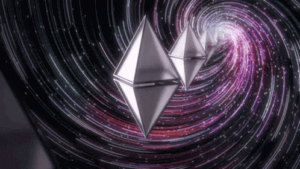
In recent years, Ethereum has been diligently upgrading its infrastructure, introducing significant changes like “The Merge” in September 2022 and “Shapella” in April 2023. While these milestones have been impactful, they didn’t tackle Ethereum’s most glaring issue—scalability. This has become more of a concern as other blockchains like Solana offer faster, cheaper transactions. However, the next set of upgrades, termed Proto-Danksharding, Danksharding, and full Sharding, promises to bring a long-awaited solution to this problem.
The Scalability Dilemma
While Ethereum leads in terms of Total Value Locked (TVL) and is the go-to platform for DeFi, its capabilities are dwarfed in terms of transaction speed by chains like Solana. The financial implications are significant; processing a million NFTs on Ethereum can cost around $33 million, compared to just $133 on Solana. Although Layer 2 solutions offer some relief, they fall far short of meeting growing demand.
Proto-Danksharding: A Prototype to Start With
Proto-danksharding is the first step towards addressing Ethereum’s scalability issue. Designed to increase throughput to around 1,000 transactions per second, it introduces a novel feature called “Blob-Carrying Transactions.” These are transactions that can carry Binary Large Objects (BLOBs), allowing more data to be stored without inflating costs.
This optimization occurs at the consensus layer, where no execution fees are incurred, providing a cost-effective method for increasing block size. Unlike other blockchain data, this blob data is periodically deleted to further optimize storage costs, shifting permanent data storage responsibilities to roll-ups.

Danksharding: The Intermediate Step
Danksharding aims to increase Ethereum’s transaction speed to an impressive 100,000 tps. In essence, it amplifies the power of Layer 2 solutions by reducing the cost of posting transaction data on the main chain. Unlike Proto-Danksharding, where each node carries the entire blob data, Danksharding allows nodes to carry only a portion of the data.
This is made possible by technologies like Erasure Coding and Data Availability Sampling. With these, even if only 50% of the data is available, the entire dataset can be reconstructed, mitigating the risk of centralization due to excessive data storage requirements.
Sharding: The Endgame
The ultimate goal is to implement full sharding, where Ethereum’s main chain itself is broken down into smaller chains (shards), each capable of processing transactions independently. This solution is akin to adding more lanes to a highway, significantly increasing throughput and speed. However, implementing full sharding involves solving a myriad of challenges, including complex verifications and fee markets.
A Long Road Ahead
Although Proto-Danksharding is a significant step towards Ethereum’s dream of scalability, it’s just the beginning. Additional features and improvements, such as “Proof of Custody,” “Proposer-Builder Separation,” and “Data Availability Sampling,” still need to be developed for full sharding to be realized.
As Ethereum ventures deeper into its roadmap, these updates represent a promising trajectory for solving one of the platform’s most persistent issues. Proto-Danksharding, Danksharding, and ultimately full Sharding are not just iterations but revolutionary steps that may well set Ethereum on the path to becoming a truly scalable, global financial infrastructure.
Disclaimer: This article is not financial advice. It is intended for informational purposes only.


